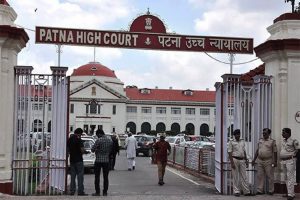Prime Minister Narendra Modi was among those who greeted the nation on the National Maritime Day on Thursday.
“The maritime sector in India, with its rich history, has the potential to power our nation’s transformation,” he wrote on Twitter.
Advertisement
“On National Maritime Day, we affirm our commitment to harness our maritime strengths for the nation’s prosperity,” the PM added.
The Congress party, too, posted a message on Twitter hailing the rapid progress made in the maritime sector, especially in the last 50 years.
“Greetings on National Maritime Day. We cherish the rapid strides made by the Indian Shipping during the last five decades and the important role that it plays in our nation’s economy,” the message on the official Twitter handle of the Grand Old Party read.
But what is the historic significance of the National Maritime day, you may ask.
To be precise, the day is celebrated to mark the sailing of the first ship wholly owned by Indians from Bombay (now Mumbai) to London in on 5 April 1919.
Some facts:
1. The ship was called SS Loyalty. It was originally a British vessel known as RMS Empress of India which was built in 1890.
2. According to ‘Transpacific Steam’, a book by E Mowbray Tate, the RMS Empress of India was 485 feet long and had a beam of 51 feet. The ship’s tonnage was 5,940 tons. It had three masts. Tate wrote that the RMS Empress of India (and its two cousins – Japan and China) were “the first pacific liners to have twin-screws with reciprocating engines, designed to give 18-knot speed but managed 14-15 knots”.
3. RMS Empress of India was sold to the Maharaja of Gwalior in 1914, who later sold it to the Scindia Steam Navigation Company Ltd in 1919. The company was a joint venture run by some of the most prominent Indian businessmen of the time including Walchand Hirachand and Narottam Morarjee.
4. The SSNC renamed the ship as SS Loyalty sending it off on its maiden voyage on 5 April 1919.
5. The maiden voyage was successful even though the hawkish British tried every trick to deny the historic achievement to the Indian company.
6. The ship could carry just over 700 passengers. Though launched as a passenger ship, SS Loyalty turned to cargo later on.
7. SS Loyalty was scrapped only four years later in 1923 but it had set the ball rolling for Indian-owned shipping companies.
8. The first National Maritime Day was celebrated on 5 April 1964 and has been marked ever since.











